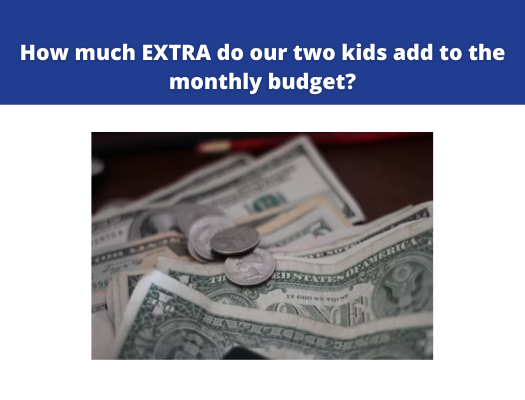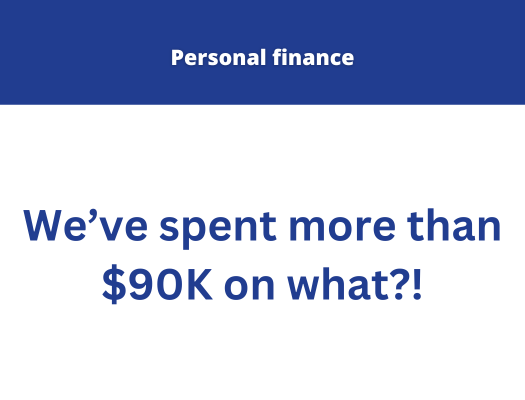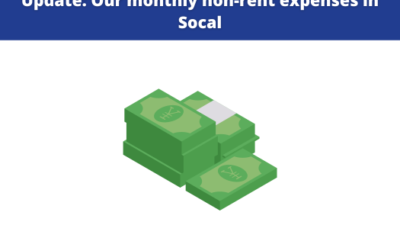Your eyes are not deceiving you, food prices have increased.
The main driver is because as COVID-19 cases increase, which they did in October, it drives consumers to panic buy, albeit, to a lesser extent than back in the spring. Economists have estimated that food prices have increased 2.4% in October, particularly for vegetables, and this is off the back of 1.2% increases in September. Other areas of food increases include meats, chicken eggs. (source 1, source 2).
We as individuals don’t have that much power in changing food prices, we can only manage around them. In broader world history, this has been particularly painful during times of hyperinflation when people could barely afford bread off the shelves as everyone stockpiled.
We do however have the ability to change the composition of what we eat, perhaps temporarily, in order to provide balance to our budgets.
1) Consider frozen whole vegetables as well as canned vegetables
I’m someone who advises companies who invest in the food and beverage industry. This means I also have insight into how our food is made. There is absolutely little that is wrong with frozen and canned vegetables. The vegetables that typically go into these formats are considered “imperfect” to be sold at retail mostly because of looks, not because they’re rotten. In many aspects, eating canned and frozen vegetables might be better in terms of nutrients, because the produce is sealed right when it is harvested, whereas it might have taken a few days for that produce to reach your shopping basket and your fridge.
2) Try changing up your menus away from the food that is spiking in costs – go meat less
The meat supply in the United States is particularly sensitive to spikes in the supply. This is because the majority of the meat processed in the country goes through just a few big companies that own large slaughterhouses and processign plants around the country. So whenever any one of the se plants get shut down because of COVID-19, meat proces shoot up because a huge amount of processing power goes offline. For that and many other reasons, meat prices are very sensitive to changes in the pandemic. Therefore, the best thing you can do here is to try to go meat less. Check to see if any seafood might be on sale, or substitute fully with vegetables – beans, tofu, lentils, are great sources of protein and also are filling.
3) Go without alcohol and drinks
If you must have your meats and vegetables, considering cutting back in other categories where your body does not need it. Alcohol, juices, sodas, are all beverages that you don’t really nutritionally need. Liquids are a great place to cut back and to have a water-based diet to keep costs low. Do you want to have flavored water? I love water enhancers for adding flavor to my water.
4) Consider frozen meats and fish
Did you know that MOST meats and fish that you buy – even the ones you see in the counter – are usually shipped frozen? With the exception of stores that source very locally, most national grocers are selling you meat from just a few processing plants located primarily in the Midwest. This means that the meat is shipped frozen to the store, thawed in the back, and then displayed. Unless there is a label that says “never frozen”, I usually assume that meat has been frozen at some point. This is why I tend to buy frozen, non-processed meat to help save money
5) Go visit Aldi!
Aldi has been making inroads in the U.S., and they have a radical, low-cost way of doing business and the savings are passed to you. You bag your groceries, push your own carts, and there is very little help in the aisles of the store. Those savings in labor are significant. Last year, Mr. Save My Cents and I put together a Christmas meal for 5 people for just $25 at Aldi. Sure, some of their private label stuff looks a bit funny and “fake” at first, and the food might look a bit banged up, but the savings really cannot be beat. If you’re just cooking for every day consumption and not looking for anything fancy, Aldi might just fit the bill
6) Skip the organic label
Farmers over time have built up so much capability of producing organic, that they actually cannot sell it all. So, some of your non-organic produce, might actually be organic. The jury is still out when it comes to whether you truly benefit from organic foods or not. Part of the challenge is that people who buy organic foods may have higher incomes which leads to better healthcare, and may tend to lead healthier lifestyles, and it’s very difficult to strip out those effects. This is a very touchy subject, but as a personal finance blogger, look, eating non-organic food is not going to kill you, it has not killed people for the decades when it wasn’t a big thing in the grocery stores. But getting into debt can be crippling. If it comes down to debt vs. food, I’d pick not going into debt, and so I say, go buy the conventional food. Once your finances improve, you can go back to organic foods again if that is important to you. You’re not a bad person, bad parent, for eating non-organic.
7) Cut somewhere else in your budget
At the end of the day food is essential, and if you’re already eating a very basic diet, unfortunately there is not much else you can do here. After all, we need food to survive, it’s the last place I’d really cut if I know that I’m already down at the most basics of food, so I’d look to reduce elsewhere (energy, entertainment, sporting, going out, clothing, hobbies).
Here’s how to keep in touch with Save My Cents:
For community and conversation with each other, 2x a week: My Facebook group
For daily inspiration: My Instagram page
To learn directly from me: My courses and private coaching










